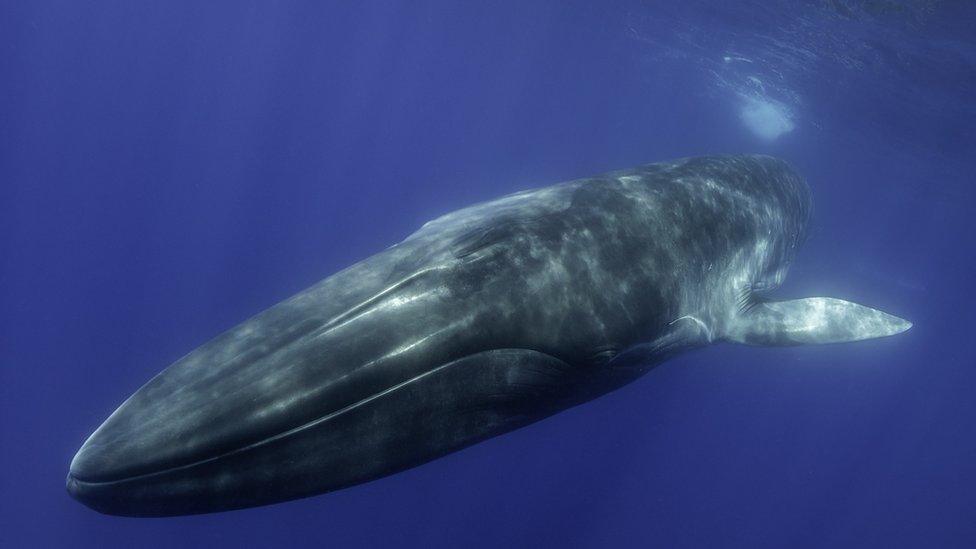How do whales communicate?
- Published
- comments

Whales have "sonic noses" which allow them to make sounds
The mystery around how whales make such loud haunting sounds to communicate has been solved by scientists.
It's been known for a long time that whales make the loudest sounds in the animal kingdom, a blue whale's call can be as loud as 180 decibels - louder than a jet plane!
But experts weren't exactly sure how these sounds were being created because they don't use their vocal chords like humans do.
Now scientists have confirmed whales use an extra pair of lips inside their nose to make the record breaking sounds.
How do whales communicate?
Orcas (also known as Killer Whales) use the sounds to communicate with each other
In order to make these massively loud clicks, whales blast air through their "nose lips" which slap forwards and backwards.
The sound of the lips vibrating makes the sound - similar to blowing a raspberry when your lips are closed.
Scientists also found that whales, along with dolphins and porpoises, make these clicks in three different pitches.
Just like we can change our voices to sound deep and booming or squeaky and high pitched, the sea mammals can do the same.
Researchers think they use high-pitched clicks, and deep booming sounds for different reasons like finding prey underwater or communicating.
The loudest whale sounds are made by blue whales and are louder than a jet plane!
Even clicks made by smaller whales and dolphins can be as loud as a gun being shot
Whales use echo-location to find things under water, that's when they make a sound and listen out for it bouncing off objects to work out where things are
How did scientists find out how whales speak?
Scientists needed whales to come close to boats to do the research
Part of the reason whale sounds have stayed so mysterious for so long is because it's so difficult to investigate what's happening inside a whale's mouth and nose when it's making noises.
Over ten years scientists have collected audio by strapping microphones onto whales in the wild and by looking inside their mouths and noses with cameras.
Whales are often interested in boats which made the scientists' work easier.
Prof Peter Madsen, the main whale biologist who made the discovery, says "many whales will come up to us and have a look and echo-locate on the boat."
"I sometimes wonder who is studying who!" he jokes.
- Published20 February 2020
- Published16 October 2019
